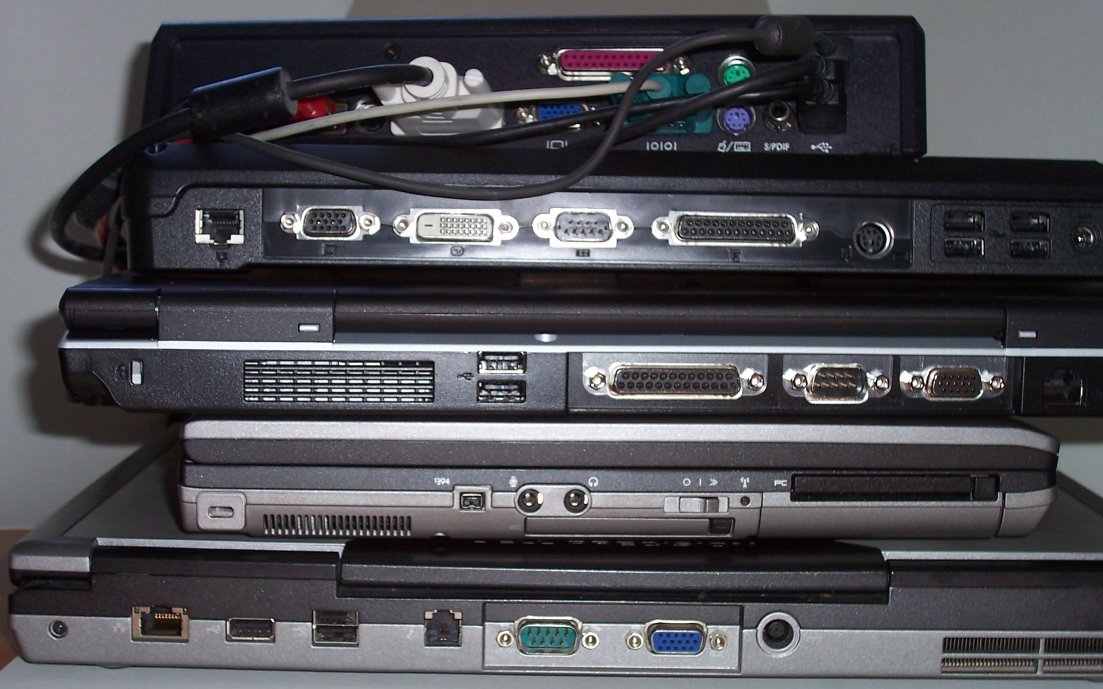As has been identified in other posts I've made here, personal computers are made up of a number of various components in order to form a complete system. Each of these components need to be able to communicate with others in order for the system to function correctly.
As personal computers have evolved over the years, the complexity and design of connection technologies has evolved with them and a number of differing types of connection interface are currently in use.
For the sake of this (and other posts) and that of personal computer terminology; an interface is defined as the point at which two devices connect and communicate with each other.
Physical Ports are defined as a hardware interface that can be used to connect devices to either a computer or each other. Sometimes, ports can also be referred to as an endpoint. Ports transfer electronic signals between the system unit and attached devices. Under normal circumstances, ports are either a wired socket or a plug although as wireless technology has evolved, ports are also used to describe the similar interface that connects devices in this manner. However, for the purpose of this post, we will disregard wireless technology.
Ports can vary in size, shape, colour, by the number and layout of the pins or connectors within the port, by it's location and by the type of signals that the port is able to carry. Both internal and external devices have ports and external ports will often have an icon next to it in order for users to be able to identify what the port is for more easily.
Most ports and the cables that are able to connect to them have an identified gender. In most cases, the ports on a system unit into which you plug cables are jacks. These jacks are the female connectors and the associated cable is most often the male connector. It's always possible to visually identify the gender of even the innermost connections within a computer system. In all cases, the one with the protruding pins is the male connector and the ones with the holes to accept the pins is the female connector.
Computer Connections are defined as the physical access points that enable a computer unit to communicate with another internal or external device (including other computers). Computer connections include ports on both the computer and device, plus a transmission medium, such as a cable with a male connector at either end (alternatively, this may be a wireless connection). Computer connections are very often categorised by the technological standard that is used to develop the device.
Computer Connections Characteristics can be quite varied and are often used to describe the connections themselves;
- Whether they are analogue or digital signal carriers. All signals that are transmitted through a computer system fall into one of these two categories.
- Analogue transmissions are almost always generated by a small electrical current, measured in volts, which carries information in the form of a continual wave. Analogue signals have a minimum and a maximum value and can have any value between these two figures. The size, shape and frequency, as well as any other specific characteristics of the waveform define the signal and the information that it carries.
- Digital transmissions, unlike their analogue counterparts, which can have an almost infinite number of possible values, have just two values: ones and zeros. This effectively means that a digital transmission is simply and on or off variable. In this way, digital data, which is simply a collection of ones and zeros, can be translated into a digital waveform. Digital waveforms switch only between voltage levels effectively representing 0 and 1.
- The frequency of the transmitted signal. In the case of analogue signals, this is the number of complete wave cycles per second. For digital signals, frequency more often related to wireless (radio) communications. This is because different types of wireless radio signals operate at distinctly different frequencies.
- The limitations of the transmission distance of the connection media, such as cables.
- The speed at which data is transferred through the transmission media.
- The quality of the signal. This may include lag or latency, slow or dropped connections and susceptibility to interference.
- Their support for DRM (Digital Rights Management) capabilities. DRM is a method of controlling access to digitally formatted content that is held under some form of copyright law. it is used to protect digital content such as e-books, digital video and music and even some software. DRMs establish the copyright for a given piece of digital material and manage how/when that content is distributed, as well as what the consumer is able to do with that content once in their possession.


Comments
Post a Comment